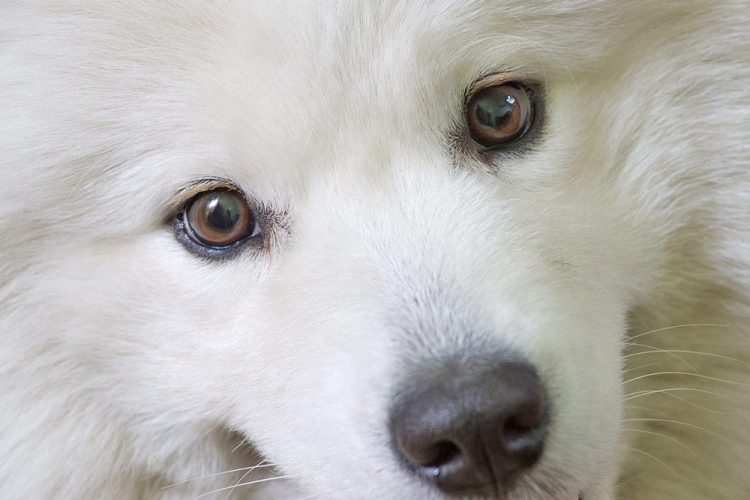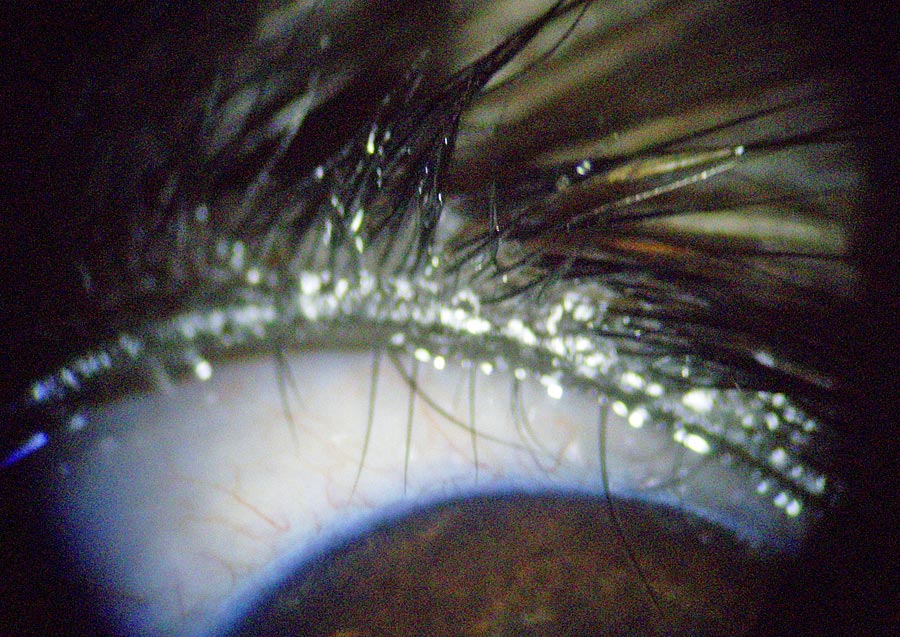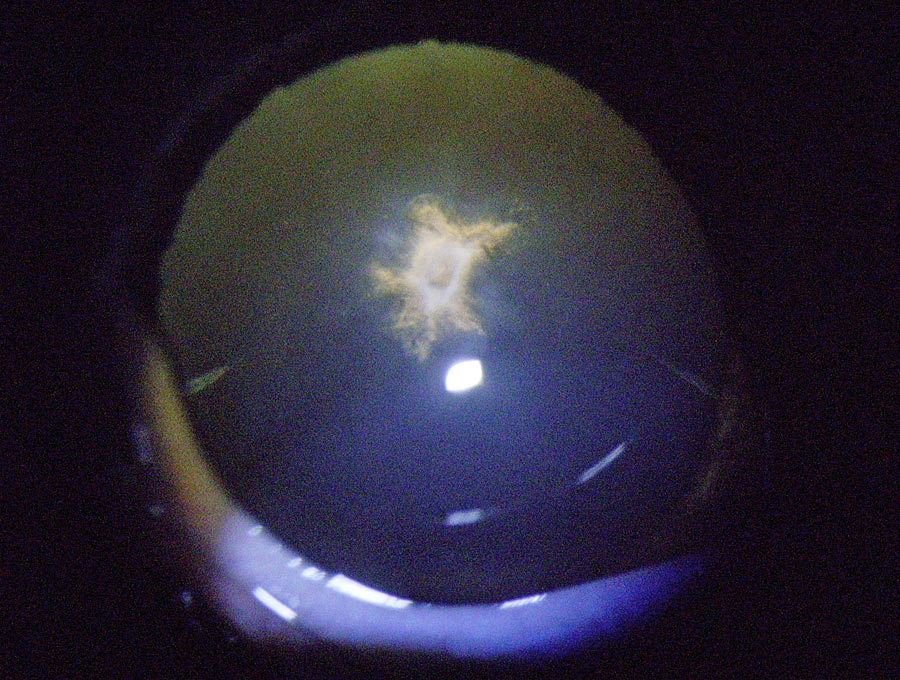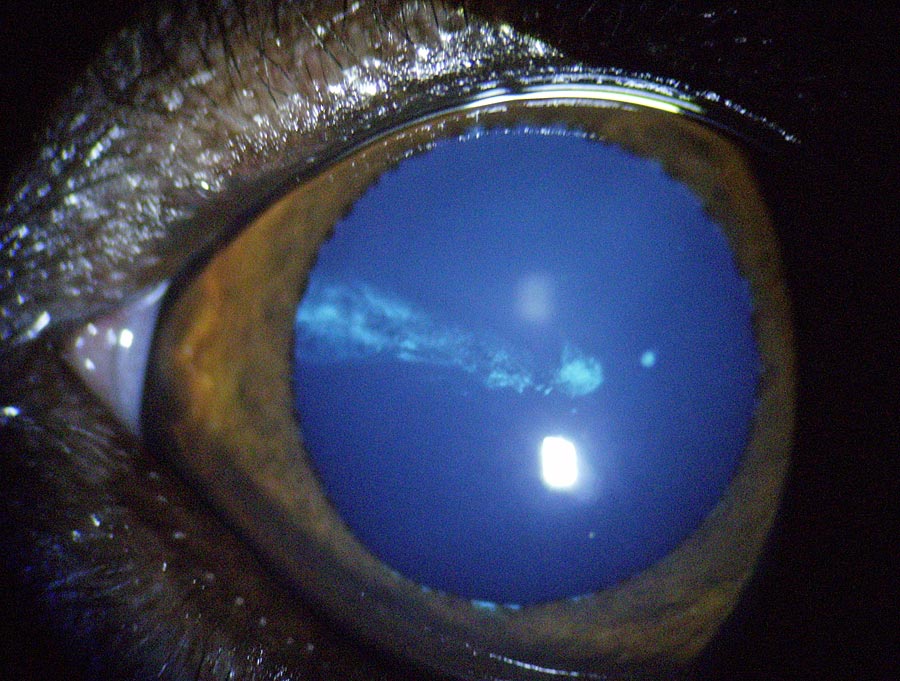RESEARCH PROJECT HEREDITARY EYE DISEASES
The COSMO Art & Science Foundation works together with the Institute for Animal Breeding and Genetics of the University of Veterinary Medicine Hannover under the leadership of Prof. Dr. Ottmar Distl on a project, that has its focus on clarifying the causes for inherited primary cataracts and distichiasis in dogs.
The university employs all available methodology of modern genomic research to reach the objectives. The scientis are going to genotype the dogs using the canine Illumina high density bead chip to identify associated genomic regions and then to screen these regions for causative mutations using next-generation sequencing.
A crucial issue for the success of the project is a suffciently large number of samples of cases and controls. Inclusion criteria of dogs to this study are regular eye examinations by veterinary ophthalmologists accredited by the DOK or veterinarians with an ECVO diploma.
Breeds to be sampled include Samoyeds, Siberian Huskies and other Nordic breeds, Akitas, American Akitas, Shibas, PONs, Elos, Lhasa Apsos, Tibetan Terrier and Lagottos.
To understand what kind of problems these diseases cause in dogs, we would like to explain about Distichiasis and Cataract.
Distichiasis
Distichiasis affected dogs have additional eyelashes, which come out at the free margin of the upper and/or lower eyelids. Either there are only single additional lashes or there is a second line of lashes. These additional lashes can be pigmented or unpigmented, small or strong.
Distichiasis may cause permanent irritation of the cornea and increase lacrimation. Thereby chronic and recidive inflammations of the cornea (keratitis) can develop. If the cause is not eliminated, a corneal ulcus might be the result.
Distichiasis can already be diagnosed in young dogs. The additional lashes are subjected to the natural hair growth cycles and so the number of the additional lashes can vary at different times of examination. After epilation these lashes will grow again.
Distichiasis is a hereditary eye disease. Using complex segregation analyses a polygenic or mixed-monogenic-polygenic inheritance with major gene defect was most likely. In different breeds a disposition to distichiasis was obvious and in some Nordic dog breeds distichiasis is a common condition.
(Text source: Koch, U., 2014)
Primary non congenital cataract
Primary non-congenital cataracts are hereditary eye diseases. Primary cataracts do not develop in connection with other eye diseases, eye injury, other generally diseases, particularly diabetic conditions or age related changes of the lens (nucleus sclerosis). Primary non-congenital cataracts firstly can be diagnosed at an age older than 8 weeks.
In contrast, primary congenital cataracts are inborn and can be diagnosed prior to the age of 8 weeks. Hereditary cataracts show typical locations in the lens and often a progression with the result of blindness. Up to now, the only possible therapy is the cataract surgery. During this operation the lenses are destroyed and aspirated. Thereafter a synthetic lens may be inserted.
(Text source: Koch, U., 2014)
Towards a genetic test for primary non-congenital cataracts and distichiasis
In order to get the breeding license in a lot of international clubs for breeding dogs, an eye examination by a certified veterinary ophthalmologist is mandatory. The aim of this approach is the regular check for presumed inherited eye diseases (PIED) prior to each breeding and thereby affected dogs are prevented from breeding.
But this method has some limitations. Often inherited eye diseases show their onset at a late age. That is why carriers of the disease are often only detected after the first breedings and when they already had offspring. Carriers of the mutation do not develop signs of disease and these dogs cannot be distinguished from dogs without the mutation or even in a later age when affected offspring resulted from matings. Using stringent selection criteria, many valuable breeding dogs would have to be excluded from breeding because carrier dogs cannot be distinguished from dogs free of the mutated allele. Thereby, valuable genetic variability will get lost, especially in breeds with a small population size.
Using less stringent selection criteria, unaffected carriers and partly also affected dogs could stay in the breeding and risk-matings (carrier x affected, and carrier x carrier) cannot be avoided. A genetic test can resolve early, which dog is fully suitable for breeding and which matings are possible in order to avoid the occurrence of affected dogs in the next and future generations.
A genetic test offers the possibility to use all dogs for breeding in case it is assured that the offspring is unaffected and the disease does not compromise the health of the dog. So after only one generation all affected dogs will disappear because risk matings can be completely prevented for the time being (KTR). It is up to the decision of the individual dog breeder how long further carriers are used for breeding and when only dogs without the disease–causing allele are employed for breeding. However, in the case of diseases with a more complex inheritance, more generations are necessary to reach the point where all risk matings can be avoided. A sufficient number of blood samples from healthy dogs as well as from dogs with a genetic defect is decisive for the success of this research project.
(Text source: Distl, O., 2014)
Therefore we, Barbara Bruns and Wolfgang Stamp, as the founders of the COSMO Art & Science Foundation, would like to ask all breeders and dog owners to participate in this project in order to contribute to its success. We would greatly appreciate to get as much samples as possible in order to establish a detection set of dogs representative for the respective eye disease and on the other hand, to have a large number of samples for validation.
The detection sample should include at least 96 dogs with 50% cases and 50% controls. The validation samples should contain 100-300 dogs per breed.
We have access to over 3000 samples from different breeds! Therefore we appreciate all the help we can get. For accuracy we still need more samples.
COSMO Art & Science Foundation
Barbara Bruns and Wolfgang Stamp
Elbuferstrasse 12
D-21423 Winsen/Luhe
Germany
Tel.: +49 4179 / 75 26 0
Fax: +49 4179 / 71 93
E-Mail: info@cosmo-foundation.org
You will find further information as well as forms for sample preparation and shipping here:
Institute for Animal Breeding and Genetics at the University of Veterinary Medicine Hannover
We would like to thank Mrs. Koch of Tierklinik Oerzen for providing the photographs (© by U. Koch – Tierklinik Oerzen).







